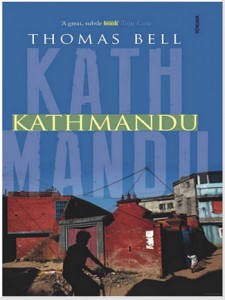Kathmandu, the capital of Nepal is an intriguing place – an ancient city wrapped in a lot of mythology, where Hinduism and Buddhism co-exist like siblings from an inter-religion marriage. It is a place ruled primarily by the people of the country. They managed to keep all the colonial forces away from them. Hence, kept the outside influences on their culture to a bare minimum. Landlocked between China and India – they are like a buffer zone who have influences from both. And have trade and pilgrim routes going through them. The world is not aware much of the history and evolution of the city, so I thought this must be a good book to peep into it.
I was cautious that a British has written the book, so there would be dates and dates and tracing back to all the previous European/Western visitors and their records. Bang on – so it was. The author married a Nepali and has been living there for more than a decade now. So I expected some first-hand experiences of living as an insider – the author disappoints on this front. But it was kind of compensated by Thomas Bell’s first-hand experience as a journalist during some of the turbulent times the country saw in recent times. His meetings with the Maoists on one hand. The high profile citizens of Kathmandu on the other, make an interesting juxtaposition of the two.
There are three parallel narratives that run through the book. The author’s journey along with the city as he lands here almost on a whim. And then continues to live there as a journalist. The second one is his digging into the history of the city through literary records and going back to the records of the earlier visitors. The third one comes from his professional journalism as he meets different people and covers various socio-political events in Kathmandu. These narratives mix and match in the chapters that seem more random than they are.
To me, the most insightful narratives were those of Maoists whom the author describes as boys and calls the revolution led by teenagers. The gory details of some of the violent scenes can be disturbing at times. The ruling class and their corruption, their idiosyncrasies and their distance from the public. Especially those outside Kathmandu valley, give a lot of perspective on the region. There is a lovely expose of the development sector and how they swindle money and reports along. Bell also talks about the stealing of arts and antiques out of Nepal that is very saddening. In this reference, he says that international community and Nepali state are binding as tightly as the two halves of the same walnut.
In Chapter 6, Bell quotes Levi and earlier French visitor on Nepal. “Nepal valley as a historical laboratory that reproduced the phases of the Indian past on a miniature scale”. I connected so well with this statement. I remember when I was walking through the streets of Kathmandu a few years ago. Vermillion coated statues were in every nook and corner of the town. Everywhere Stupas and temples looked at you. Consequently, a thought crossed my mind-India must have looked the same before the invasions changed the landscape forever. People observe so many rituals, customs, and festivals in the book that you feel as if, this is all, that Nepalis do all the time. The caste-based society with unwritten operational rules between them reminded of India as it used to be even 20-30 years back till we all started pretending we are atheists.
What I wanted more was author’s personal journey as well. Since he begins the book my mentioning his Nepali wife. He goes back to his girlfriend a few times during his travels in interior Nepal. But does not mention when and to whom he gets married to? Suddenly he declares he is married. And also has kids and continues to live in Kathmandu. I also think the organization of the book and editors could have done a better work. Having said that it is an important contemporary resource on Kathmandu and Nepal.
Take your call.
You may buy this book – Kathmandu by Thomas Bell at Amazon.









